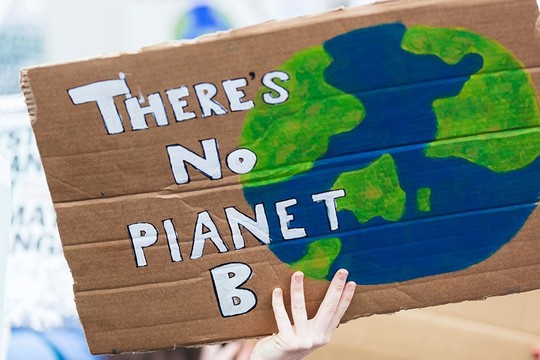Photo: Natural History Museum
“We are ‘greening’ ourselves to extinction,” notes Vijay Kolinjivadi, a post-doctoral fellow at the Institute of Development Policy at the University of Antwerp, at ‘Al Jazeera’.
There is the fatal confusion between efficiency and ecology.
We are being duped to believe that buying more “energy efficient” or “green” products can save the planet. Whether it is a new electric car, an “eco-friendly” condo, a paper straw instead of a plastic straw, or a solar-powered turtle-shaped mega yacht – all are branded as ecological solutions because they are supposedly more energy or materially efficient than the standard alternative.
What often hides behind these “green” labels is the large carbon footprint their production generates. Furthermore, “greened” technological solutions often just shift the environmental damage they do to another sector or a distant location.
For example, the growing electric vehicle industry may help reduce carbon emissions but it will also cause a massive jump in the demand for lithium and other minerals. Scientists are already warning about the grave environmental impact the rush for mining lithium may have, including water pollution and loss, toxic waste spills, biodiversity loss and soil contamination.
The argument that “green” solutions provide jobs also rests on weak foundations, especially if the quality of work is considered. As the ILO has pointed out, a large share of employment for the so-called “nature-based solutions” is informal, low-wage, temporary, and exposed to risks, such as unsafe working conditions, child labour and lack of social security.
Nature conservation has also fallen prey to the “greening” deception. For years now, large conservation organisations and their corporate sponsors have been pushing the idea that large swaths of land and forests need to be fenced off so we can protect biodiversity and help mitigate the effects of climate change.
Like the carbon offset schemes, this policy is just another way to enable big polluters to continue to pollute by saying: “We are doing something for the planet.”
It also enables some – particularly in the tourism and construction sectors – to benefit from the so-called “nature” tourism in which the wealthy pay big money to access fenced-off parks and “experience” pristine nature while staying at luxury real estate projects.
And just like other “greening” strategies, this type of nature conservation results in major human injustices. Indigenous peoples from around the world have suffered evictions, dispossession and even killings as they have been forced from their lands to make way for nature conservation projects.
In the Republic of the Congo, the Indigenous Baka people have been brutally oppressed by the guards of a conservation project supported by the United Nations Development Programme (UNDP), World Wildlife Fund (WWF), the EU, the US and logging and palm oil companies. A UNDP investigation found that members of the community were routinely beaten, some imprisoned, tortured or raped.
In the neighbouring Democratic Republic of the Congo, the guards of a national park funded by the US and German governments have also engaged in violent attacks on the Indigenous Batwa people living in its territory. A 2022 report by Minority Rights has produced evidence that at least 20 members of the community have been killed and at least 15 women raped during forced eviction campaigns.
There are countless horror stories like these ones; according to estimates, some 14 million people have been evicted in this manner in Africa alone. That is why the news that a new conservation scheme was approved at the UN conference on biodiversity (COP15) held in Montreal was met with much dismay by Indigenous people across the world.
The new Global Biodiversity Framework – also called the 30×30 target – aims to turn 30 percent of the planet into protected areas by 2030. In a letter to COP15 participants, Indigenous peoples stated that the policy “may be the biggest land grab in history and further threaten the physical and cultural survival of Indigenous people worldwide”.
Given that Indigenous peoples reside on territories that hold 80 percent of the world’s biodiversity, it is certain that Indigenous-held land will fall within the 30×30 plan. Evicting them from land they have lived in since time immemorial is hardly an ecological solution.
A much better solution would be addressing the biggest cause of biodiversity loss: industrial-scale farming. It destroys the soil, increases desertification, releases huge amounts of greenhouse gases and is linked to deforestation.
Making the “green” choice then leaves us satisfied that we are “doing something” about climate change. But driving an electric car, putting your organic produce in a tote bag and turning down your heating or air-conditioner by one degree is not going to save the planet.
Let’s have the courage to face this fact, Vijay Kolinjivadi stresses.
read more in our Telegram-channel https://t.me/The_International_Affairs

 10:40 16.04.2023 •
10:40 16.04.2023 •























